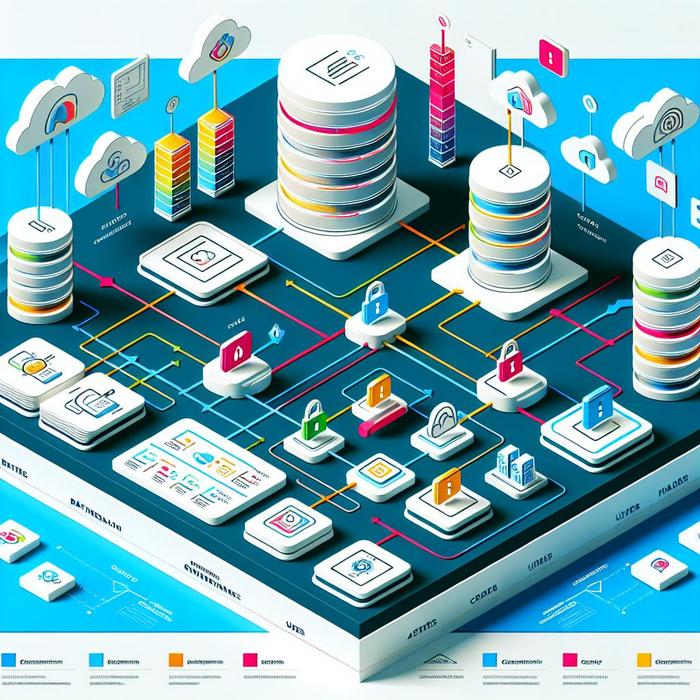Table of Contents Hide
Comparing Top Data Masking Tools of 2024
 6 MIN. READING
6 MIN. READING
Unveiling the Essentials: What Makes the Ideal Data Masking Technique?
Has it ever crossed your mind why so much emphasis is placed on effective data anonymization? After all, in an age where data breaches and privacy concerns are rampant, protecting sensitive information has become a top priority for businesses. But how do you choose the right tool that guarantees the security of your database? Our aim in this blog post is to equip you with knowledge to make an informed decision when comparing data masking tools.
Understanding the Importance of Data Anonymization
Where data is the cornerstone of business operations. And with that comes the undeniable responsibility of handling sensitive data. Whether it’s related to your employees, customers, or business transactions, this sensitive data, if fallen into the wrong hands, can lead to catastrophic outcomes. Therefore, adopting a robust anonymization strategy is not just a luxury but a necessity for organizations.
Examining the Features of Prominent Data Masking Tools
While there is a plethora of data anonymization tools in the market, choosing the right one can be a daunting task. Here, we present you with a comparative discussion of the top choices without mentioning specific vendors. Your decision should ideally be based on a tool’s proficiency in:
– **Performance**: A tool that assures fast and efficient data anonymization while maintaining data integrity ensures that your operations are not hampered.
– **Scalability**: Can the tool handle your growing data needs? It should be capable of managing data from varying sources and formats.
– **Regulatory Compliance**: It’s not just about masking data; the tool should also support compliance with various data privacy regulations.
– **User Experience**: An intuitive and user-friendly interface can significantly reduce operational complexities.
– **Integration Capabilities**: The tool should seamlessly integrate with your existing IT infrastructure, minimizing disruption.
– **Support and Assistance**: A vendor that provides continuous technical support ensures the smooth functioning of your data anonymization process.
Moving Beyond Traditional Approaches: AI-driven Data Anonymization
As technology evolves, artificial intelligence (AI) has been making a foray into various aspects of day-to-day operations, including data anonymization. Compared to traditional techniques, AI-driven tools are known for enhancing accuracy and reducing the time consumed in the anonymization process. According to a report, AI-powered tools use advanced algorithms to understand the structure and context of the data, providing more robust and precise masking.
Exploring the Role of Database Virtualization
Database virtualization plays a pivotal role in ensuring efficiency in data operations. By creating a virtual data layer, it facilitates access to data across multiple sources without the need to move or replicate data. This not only enables faster data provisioning for multiple processes but also improves efficiency by removing data redundancy. For more insights on the subject, check our post on the benefits of using a data catalogue.
Choosing the right data anonymization tool is not a one-size-fits-all situation; it depends on an organization’s specific requirements and the nature of the data they handle. As many companies continue to grow and evolve, so too does the demand for advanced solutions that can effectively safeguard sensitive data. In an effort to stay ahead, experts have made comparison tables to aid in your decision-making process. So, the question is, what features and capabilities does your ideal tool possess? Let’s continue this discussion as we delve deeper into the realm of data anonymization.
For more information on test data strategies, visit our blog on advancing agile test data strategies.
From the Lens of a Database Administrator: Key Considerations
As senior management in IT roles, there is a palpable need to understand the nuts and bolts of the tools that manage data protection. From a bird’s eye view, data handling is delicate as it directly impacts a business’s credibility and customer trust. A data breach could trigger catastrophic ramifications on the reputation of a firm that could eventually result in revenue loss.
Setting the Standard: What Does Your Ideal Tool Look Like?
Developing the understanding of the IT infrastructure to support your data protection needs brings forth the question, what does your ideal tool look like? As an enterprise leader, you would need a sophisticated and dependable tool that can manipulate data in a way that preserves its realism while thoroughly obfuscating sensitive details.
Navigating the Landscape
While it may seem to be a herculean task to navigate the multitude of available tools, focusing on the key capabilities of an effective solution can simplify your decision-making process. Remember, a stellar tool would likely:
– **Incorporate Realism**: The anonymized data should remain useful for the organization. The tool should preserve the structure and semantics of the data, maintaining its realism for analysis without revealing any sensitive information.
– **Be Flexible**: It should be able to handle data heterogeneity, managing data from varying sources and formats.
– **Promote Ease of Use**: You shouldn’t need a doctorate in computer science to use the tool; it should be user-friendly and offer a low learning curve.
– **Guarantee Seamless Integration**: Whatever tool you choose, it should integrate readily with your existing IT infrastructure, allowing a smooth transition without any disruption.
The Power of AI in Data Anonymization
Artificial intelligence (AI) has the potential to revolutionize data security and control, surpassing traditional methods of data anonymization. AI-powered tools have demonstrated enhanced accuracy and efficiency, significantly reducing the time consumed in the process. Read more on the comparison of traditional and AI data masking methods.
Emphasizing the Role of Database Virtualization
Emphasizing the significance of database virtualization becomes inevitable when discussing optimal data operations. By creating a virtual data layer, it not only facilitates access to data across multiple sources without the need to move or replicate data but also eliminates redundancy. Be sure to check our blog post for a comprehensive understanding of the subject.
Indeed, choosing the right data anonymization tool should depend on an organization’s specific requirements and the nature of the data it manages. As companies continue to burgeon and metamorphosize, so will the demand for innovative solutions capable of effectively safeguarding sensitive data. Are you wondering what features and capabilities would your ideal tool exhibit? Let’s carry on this discussion and dive deeper into the spheres of data anonymization.
We have more insights on managing test data efficiently at our blog.
As a leader, staying ahead of these trends and planning for the landscape shifts ensures that your company will be competitive and well-equipped to handle any emerging data security challenges. Remember, the right tool for your enterprise will depend not only on today’s needs but also on the future roadmap for your data protection strategies.


